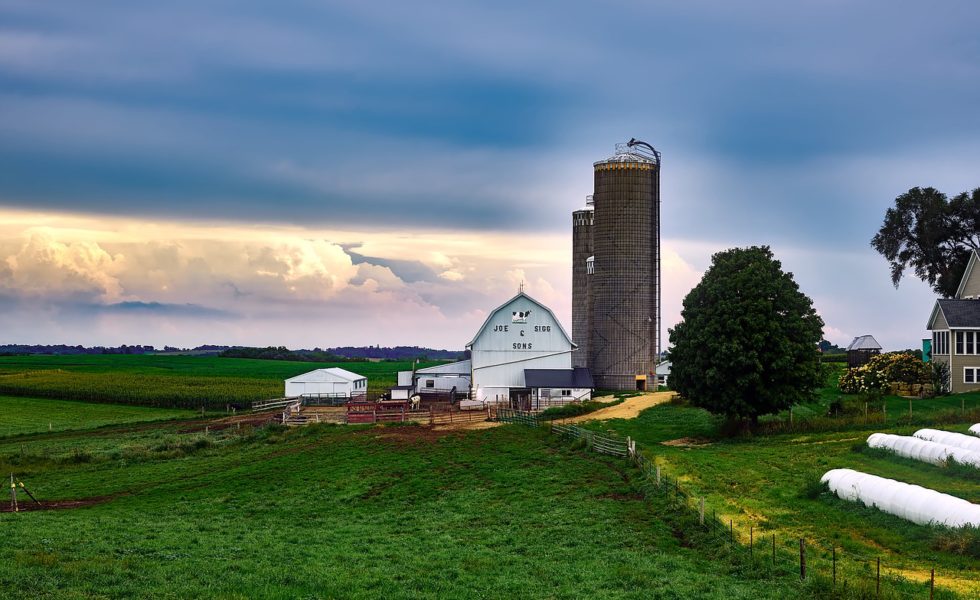‘Overalls, two shoes, and a belt’
Posted on August 2, 2024

Farm and Food File for the week beginning Sunday, June 9, 2024
The clothes we wore, like the crops we worked, marked the seasons on the dairy farm of my youth. Coveralls, for example, suggested winter while (ahem) “cover little” meant the hot, steamy southern Illinois summer.
That was especially so for my brothers and me. If we were relegated to kitchen or garden chores, we were barefoot, barebacked, and bare headed. If we somehow had finessed a farm job, like raking hay or cultivating soybeans, we added work shoes, socks, T-shirts, and a baseball cap.
Whether exiled to the household gulag or set free in the fields, we wore blue jeans, never shorts. In fact, I don’t remember owning a pair of shorts until I was old enough to vote.
That excluded cutoff jeans, of course, our swimwear for a dip in our mud-bottomed, cow-crowded pond or the rare occasion we went to the local municipal pool.
We weren’t the only menfolk with a denim-heavy wardrobe. My father, our hired men Jackie and Howard, and Dad’s machinery-breaking Uncle Honey all wore overalls–never shorts–on the farm everyday for decades.
In fact, I’m certain Uncle Honey never showed a bare toe or bare foot–let alone two bare legs–in public since the Roosevelt Administration. The Teddy Roosevelt Administration.
The main reason for all the legwear was its practicality. Farm work back then was a dirty, scratchy business that often put you on your knees to repair, say, a broken sickle section or tractor tire. Jeans also limited the damage an alfalfa bale could do as you gave it a leg boost to stack it on a rolling hay wagon or in a still, airless barn.
But even our limited summer attire was too much clothing for one hired man everyone called “Buff.” Too young to know the word’s meanings, I once asked my father why the big, well-tanned man answered to a such an odd name.
“Well,” my Dad said slowly while searching for a child-appropriate explanation, “in the summer, Buff wears only four pieces of clothing: overalls, two shoes, and a belt.”
And what about underwear?
“That’s where the ‘buff’ thing comes in,” he said with a firmness that made clear he was finished explaining the details of Buff ’s summer couture.
Our blue-jeans only months did give my mother and her sewing machine a well-earned rest from the almost endless task of making school shirts, blouses, skirts, and jackets for my brothers, sister, and me. Summer was her no-sew season.
Our Sunday church clothes weren’t jeans but standard issue Lutheran wear: baggy cotton trousers, oversized short-sleeved shirts, a too long or too short clip-on tie, and worn but well-polished shoes.
And every stitch of it–like almost all my clothes–was, of course, hand-me-down from the family’s first-born prince, brother Richard. Rich either grew so fast or took such good care of his clothes that all passed on to my next brother, David, in good condition.
David, however, had dedicated his boyhood to finding out just how many tears, holes, and stains he could put in Rich’s duds by the time he handed them down to me. By any standard, then or now, David had a talent for his hobby.
We boys weren’t the only ones in the family wearing hand-me-downs. My father had two suits most of his adult life, a black one and brown one. Both had been given to him by his brother-in-law, Clifford, who grabbed them off the “worn” rack at the elegant, St. Louis men’s store where he worked.
Dad wore ‘em to church for decades except on summer Sundays when, like us, he sat in wrinkled cotton pants, a short-sleeved white shirt, tie, and Uncle Cliff’s hand-me-down wingtip shoes.
Every Monday, though, all were back in our denim blue uniforms under the blue, summer southern Illinois sky.
© 2024 ag comm
Share This